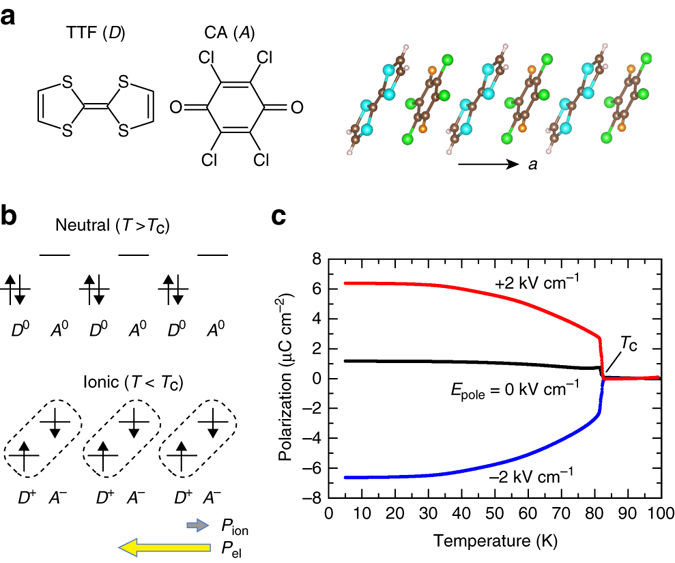強誘電性電荷移動錯体におけるシフト電流光起電力効果
Shift current photovoltaic effect in a ferroelectric charge-transfer complex
2017年8月17日 Nature Communications 8 : 281 doi: 10.1038/s41467-017-00250-y

シフト電流は、非中心対称性単結晶において生成される定常状態の光電流であり、バルクの光起電力効果の主な起源の1つであると考えられている。この効果の機構は、波動関数のシフトによる光生成電荷の移動で、その大きさは、電子起源の分極と密接に関連している。今回我々は、主に分子間電荷移動によって大きな強誘電性分極が生じる有機分子性結晶テトラチアフルバレン-p-クロラニルにおける起電力効果について報告する。我々は、可視光照射によるかなり大きなゼロバイアス光電流と、分極反転による電流方向のスイッチングを観測している。さらに、光キャリアの移動距離が200 μmを超えることも明らかにしている。今回の結果は、シフト電流の独特な特徴を明らかにし、新しい光電気デバイスに強誘電性有機分子化合物を応用できる可能性があることを示している。
Corresponding Author
Shift current is a steady-state photocurrent generated in non-centrosymmetric single crystals and has been considered to be one of the major origins of the bulk photovoltaic effect. The mechanism of this effect is the transfer of photogenerated charges by the shift of the wave functions, and its amplitude is closely related to the polarization of the electronic origin. Here, we report the photovoltaic effect in an organic molecular crystal tetrathiafulvalene-p-chloranil with a large ferroelectric polarization mostly induced by the intermolecular charge transfer. We observe a fairly large zero-bias photocurrent with visible-light irradiation and switching of the current direction by the reversal of the polarization. Furthermore, we reveal that the travel distance of photocarriers exceeds 200 μm. These results unveil distinct features of the shift current and the potential application of ferroelectric organic molecular compounds for novel optoelectric devices.

